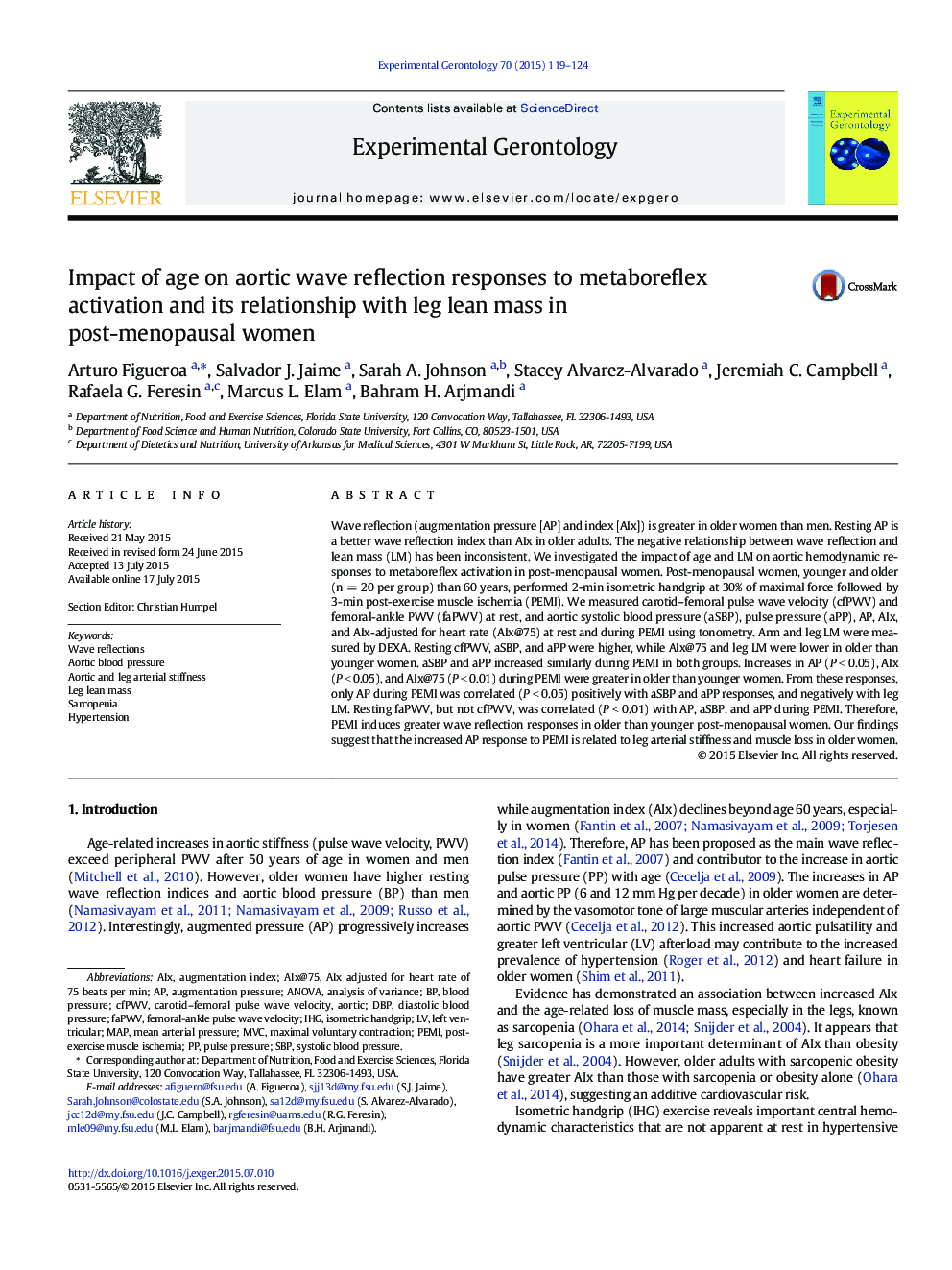| Article ID | Journal | Published Year | Pages | File Type |
|---|---|---|---|---|
| 8263272 | Experimental Gerontology | 2015 | 6 Pages |
Abstract
Wave reflection (augmentation pressure [AP] and index [AIx]) is greater in older women than men. Resting AP is a better wave reflection index than AIx in older adults. The negative relationship between wave reflection and lean mass (LM) has been inconsistent. We investigated the impact of age and LM on aortic hemodynamic responses to metaboreflex activation in post-menopausal women. Post-menopausal women, younger and older (n = 20 per group) than 60 years, performed 2-min isometric handgrip at 30% of maximal force followed by 3-min post-exercise muscle ischemia (PEMI). We measured carotid-femoral pulse wave velocity (cfPWV) and femoral-ankle PWV (faPWV) at rest, and aortic systolic blood pressure (aSBP), pulse pressure (aPP), AP, AIx, and AIx-adjusted for heart rate (AIx@75) at rest and during PEMI using tonometry. Arm and leg LM were measured by DEXA. Resting cfPWV, aSBP, and aPP were higher, while AIx@75 and leg LM were lower in older than younger women. aSBP and aPP increased similarly during PEMI in both groups. Increases in AP (P < 0.05), AIx (P < 0.05), and AIx@75 (P < 0.01) during PEMI were greater in older than younger women. From these responses, only AP during PEMI was correlated (P < 0.05) positively with aSBP and aPP responses, and negatively with leg LM. Resting faPWV, but not cfPWV, was correlated (P < 0.01) with AP, aSBP, and aPP during PEMI. Therefore, PEMI induces greater wave reflection responses in older than younger post-menopausal women. Our findings suggest that the increased AP response to PEMI is related to leg arterial stiffness and muscle loss in older women.
Keywords
Related Topics
Life Sciences
Biochemistry, Genetics and Molecular Biology
Ageing
Authors
Arturo Figueroa, Salvador J. Jaime, Sarah A. Johnson, Stacey Alvarez-Alvarado, Jeremiah C. Campbell, Rafaela G. Feresin, Marcus L. Elam, Bahram H. Arjmandi,
